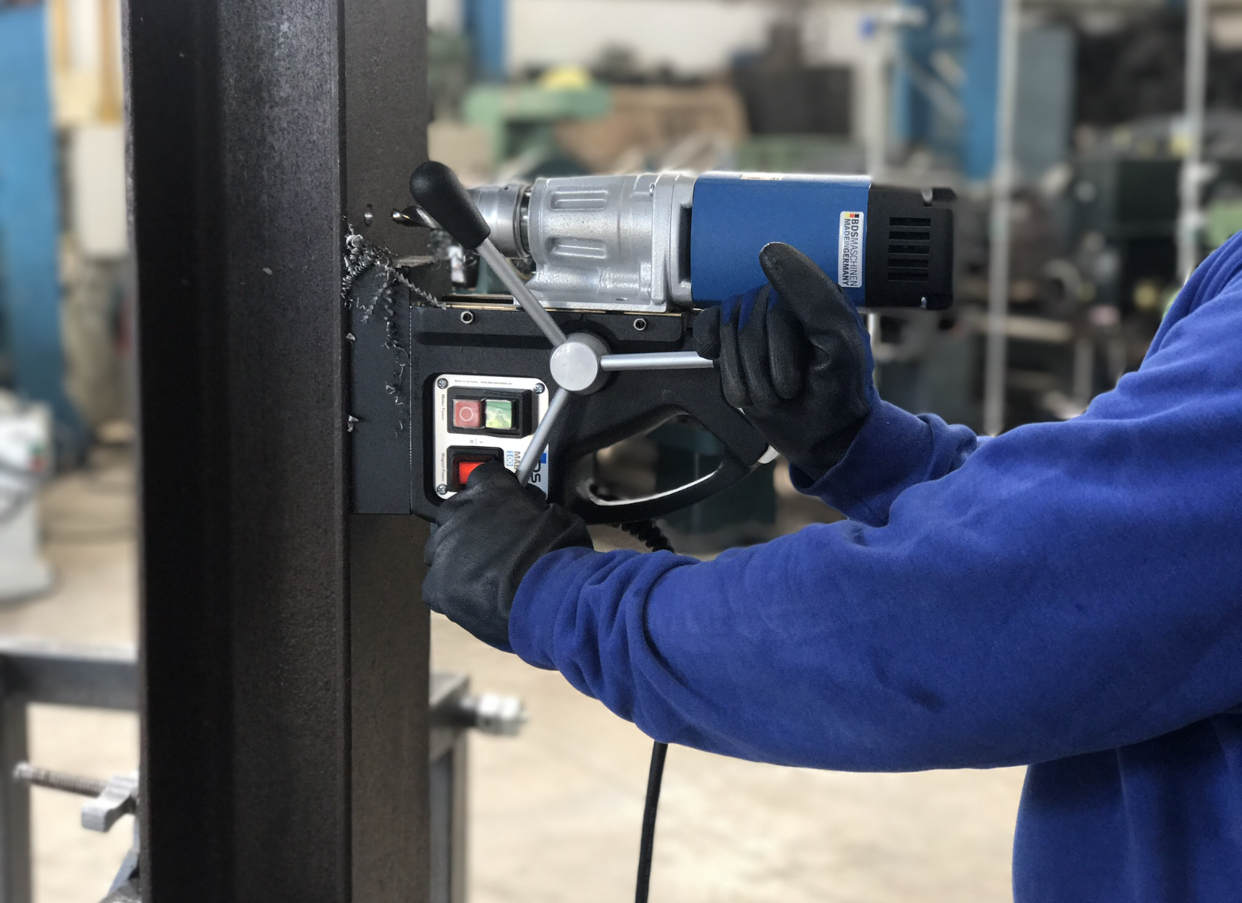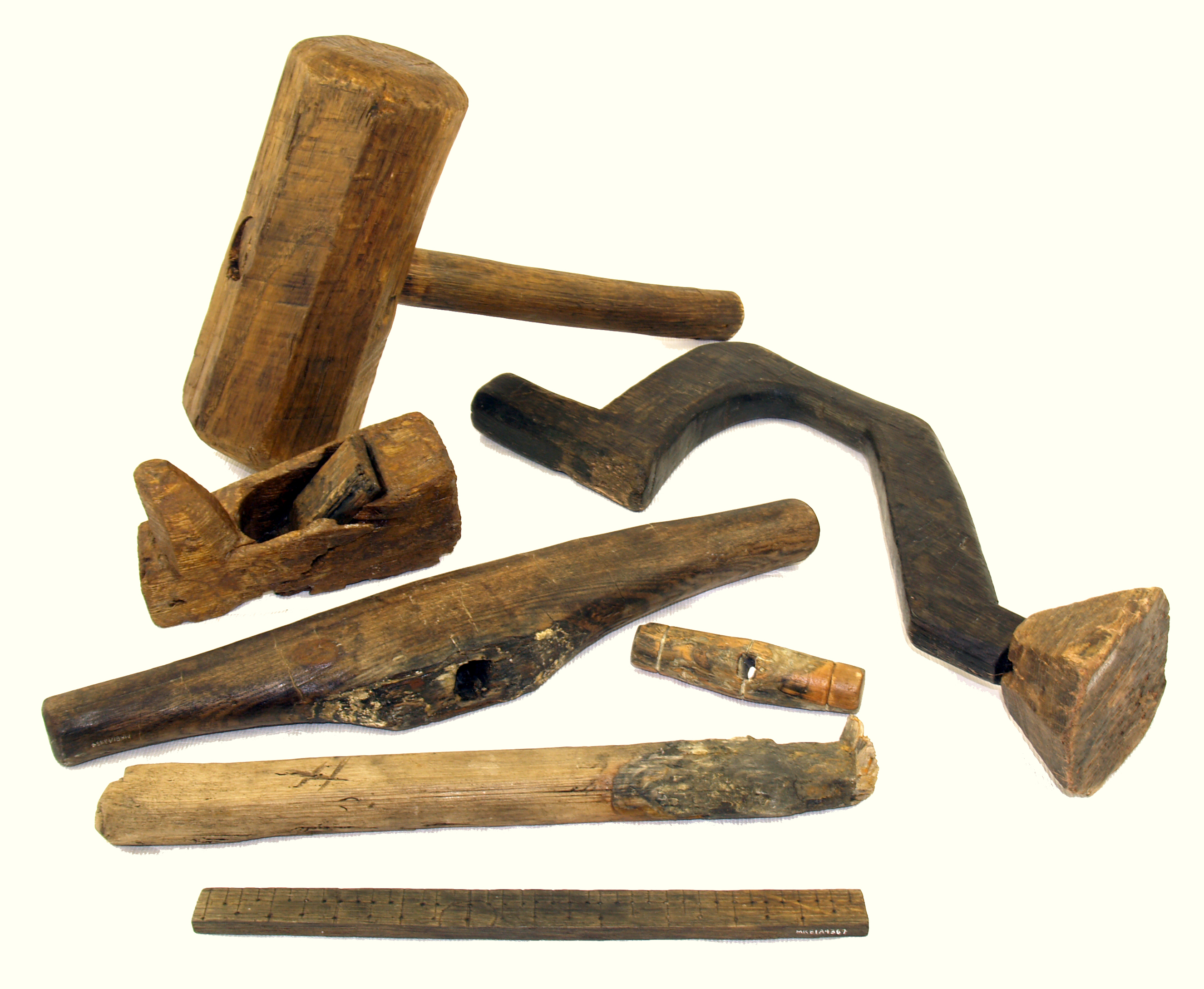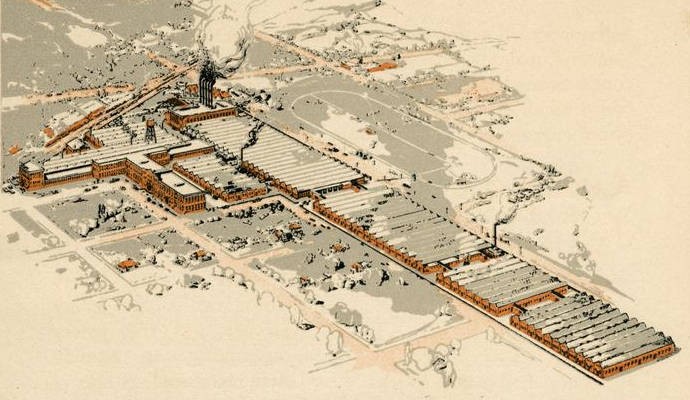|
Screwdriver
A screwdriver is a tool, manual or powered, used for turning screws. A typical simple screwdriver has a handle and a shaft, ending in a tip the user puts into the screw head before turning the handle. This form of the screwdriver has been replaced in many workplaces and homes with a more modern and versatile tool, a power drill, as they are quicker, easier, and can also drill holes. The shaft is usually made of tough steel to resist bending or twisting. The tip may be hardened to resist wear, treated with a dark tip coating for improved visual contrast between tip and screw—or ridged or treated for additional 'grip'. Handles are typically wood, metal, or plastic and usually hexagonal, square, or oval in cross-section to improve grip and prevent the tool from rolling when set down. Some manual screwdrivers have interchangeable tips that fit into a socket on the end of the shaft and are held in mechanically or magnetically. These often have a hollow handle that contains various ... [...More Info...] [...Related Items...] OR: [Wikipedia] [Google] [Baidu] |
List Of Screw Drives
At a minimum, a screw drive is a set of shaped cavities and protrusions on the screw head that allows torque to be applied to it. Usually, it also involves a mating tool, such as a screwdriver, that is used to turn it. The following heads are categorized based on frequency, with some of the less-common drives being classified as "tamper-resistant." Most heads come in a range of sizes, typically distinguished by a number, such as "Phillips #00". These sizes do not necessarily describe a particular dimension of the drive shape, but rather are arbitrary designations. Slotted drives Slot Slot screw drives have a single horizontal indentation (the ''slot'') in the fastener head and is driven by a "common blade" or flat-bladed screwdriver. This form was the first type of screw drive to be developed, and for centuries, it was the simplest and cheapest to make. Additionally, it is unique compared to other common drives, due to it being straightforward to manufacture the slot h ... [...More Info...] [...Related Items...] OR: [Wikipedia] [Google] [Baidu] |
Robertson Screw
A Robertson screw, also known as a square screw or Scrulox, is a type of screw with a square-shaped socket in the screw head and a corresponding square protrusion on the tool. Both the tool and socket have a slight taper. Originally designed to enable the screws to be made using cold forming of the heads, the taper has two other advantages which have helped popularize it: it makes inserting the tool easier, and helps keep the screw on the tool without the user having to hold it there. The Robertson screw is specified as ANSI Type III Square Center. Usage and design Robertson screws are commonplace in Canada, though they have been used in other countries and are becoming much more common. As patents expired and awareness of their advantages have spread, Robertson fasteners have become popular in woodworking and general construction. Combination Robertson/Phillips drives are often used in the electrical trade, particularly for device and circuit breaker terminals, as well as c ... [...More Info...] [...Related Items...] OR: [Wikipedia] [Google] [Baidu] |
Impact Driver
An impact driver is a tool that delivers a strong, sudden rotational force and forward thrust. The force can be delivered either by striking with a hammer in the case of manual impact drivers, or mechanically in the case of powered impact drivers. It is often used by mechanics to loosen larger screws, bolts and nuts that are corrosively "frozen" or over-torqued. The direction can also be reversed for situations where screws have to be tightened with torque greater than a screwdriver can reasonably provide. Manual impact drivers Manual impact drivers consist of a heavy outer sleeve that surrounds an inner core that is splined to it. The spline is curved so that when the user strikes the outer sleeve with a hammer, its downward force works on the spline to produce turning force on the core and any socket or work bit attached to it. The tool translates the heavy rotational inertia of the sleeve to the lighter core to generate large amounts of torque. At the same time, th ... [...More Info...] [...Related Items...] OR: [Wikipedia] [Google] [Baidu] |
Screw
A screw and a bolt (see '' Differentiation between bolt and screw'' below) are similar types of fastener typically made of metal and characterized by a helical ridge, called a ''male thread'' (external thread). Screws and bolts are used to fasten materials by the engagement of the screw thread with a similar ''female thread'' (internal thread) in a matching part. Screws are often self-threading (also known as self-tapping) where the thread cuts into the material when the screw is turned, creating an internal thread that helps pull fastened materials together and prevents pull-out. There are many screws for a variety of materials; materials commonly fastened by screws include wood, sheet metal, and plastic. Explanation A screw is a combination of simple machines: it is, in essence, an inclined plane wrapped around a central shaft, but the inclined plane (thread) also comes to a sharp edge around the outside, which acts as a wedge as it pushes into the fastened material, and th ... [...More Info...] [...Related Items...] OR: [Wikipedia] [Google] [Baidu] |
Cordless Drills
A drill is a tool used for making round holes or driving fasteners. It is fitted with a bit, either a drill or driverchuck. Hand-operated types are dramatically decreasing in popularity and cordless battery-powered ones proliferating due to increased efficiency and ease of use. Drills are commonly used in woodworking, metalworking, construction, machine tool fabrication, construction and utility projects. Specially designed versions are made for miniature applications. History Around 35,000 BC, ''Homo sapiens'' discovered the benefits of the application of rotary tools. This would have rudimentarily consisted of a pointed rock being spun between the hands to bore a hole through another material. This led to the hand drill, a smooth stick, that was sometimes attached to flint point, and was rubbed between the palms. This was used by many ancient civilizations around the world including the Mayans. The earliest perforated artifacts, such as bone, ivory, shells, and antlers ... [...More Info...] [...Related Items...] OR: [Wikipedia] [Google] [Baidu] |
Hand Tool
A hand tool is any tool that is powered by hand rather than a motor. Categories of hand tools include wrenches, pliers, cutters, files, striking tools, struck or hammered tools, screwdrivers, vises, clamps, snips, hacksaws, drills, and knives. Outdoor tools such as garden forks, pruning shears, and rakes are additional forms of hand tools. Portable power tools are not hand tools. History Hand tools have been used by humans since the Stone Age when stones were used for hammering and cutting. During the Bronze Age tools were made by casting the copper and tin alloys. Bronze tools were sharper and harder than those made of stone. During the Iron Age iron replaced bronze, and tools became even stronger and more durable. The Romans developed tools during this period which are similar to those being produced today. In the period since the industrial revolution, the manufacture of tools has transitioned from being craftsman made to being factory produced. A large coll ... [...More Info...] [...Related Items...] OR: [Wikipedia] [Google] [Baidu] |
Power Drill
A drill is a tool used for making round holes or driving fasteners. It is fitted with a bit, either a drill or driver chuck. Hand-operated types are dramatically decreasing in popularity and cordless battery-powered ones proliferating due to increased efficiency and ease of use. Drills are commonly used in woodworking, metalworking, construction, machine tool fabrication, construction and utility projects. Specially designed versions are made for miniature applications. History Around 35,000 BC, ''Homo sapiens'' discovered the benefits of the application of rotary tools. This would have rudimentarily consisted of a pointed rock being spun between the hands to bore a hole through another material. This led to the hand drill, a smooth stick, that was sometimes attached to flint point, and was rubbed between the palms. This was used by many ancient civilizations around the world including the Mayans. The earliest perforated artifacts, such as bone, ivory, shells, and antl ... [...More Info...] [...Related Items...] OR: [Wikipedia] [Google] [Baidu] |
Tool
A tool is an object that can extend an individual's ability to modify features of the surrounding environment or help them accomplish a particular task. Although many animals use simple tools, only human beings, whose use of stone tools dates back hundreds of millennia, have been observed using tools to make other tools. Early human tools, made of such materials as stone, bone, and wood, were used for preparation of food, hunting, manufacture of weapons, and working of materials to produce clothing and useful artifacts. The development of metalworking made additional types of tools possible. Harnessing energy sources, such as animal power, wind, or steam, allowed increasingly complex tools to produce an even larger range of items, with the Industrial Revolution marking an inflection point in the use of tools. The introduction of widespread automation in the 19th and 20th centuries allowed tools to operate with minimal human supervision, further increasing the productivity ... [...More Info...] [...Related Items...] OR: [Wikipedia] [Google] [Baidu] |
Wrench
A wrench or spanner is a tool used to provide grip and mechanical advantage in applying torque to turn objects—usually rotary fasteners, such as nuts and bolts—or keep them from turning. In the UK, Ireland, Australia, and New Zealand ''spanner'' is the standard term. The most common shapes are called ''open-ended spanner'' and ''ring spanner''. The term ''wrench'' is generally used for tools that turn non-fastening devices (e.g. tap wrench and pipe wrench), or may be used for a monkey wrench—an adjustable pipe wrench. In North American English, ''wrench'' is the standard term. The most common shapes are called ''open-end wrench'' and ''box-end wrench''. In American English, ''spanner'' refers to a specialized wrench with a series of pins or tabs around the circumference. (These pins or tabs fit into the holes or notches cut into the object to be turned.) In American commerce, such a wrench may be called a ''spanner wrench'' to distinguish it from the British sen ... [...More Info...] [...Related Items...] OR: [Wikipedia] [Google] [Baidu] |
Phillips Screw Head
Phillips may refer to: Businesses Energy * Chevron Phillips Chemical, American petrochemical firm jointly owned by Chevron Corporation and Phillips 66. * ConocoPhillips, American energy company * Phillips 66, American energy company * Phillips Petroleum Company, American oil company Service * Phillips (auctioneers), auction house * Phillips Distilling Company, Minnesota distillery * Phillips Foods, Inc. and Seafood Restaurants, seafood chain in the mid-Atlantic states * Phillips International Records, a record label founded by Sam Phillips Vehicle * Phillips (constructor), American constructor of racing cars * Phillips Cycles, British manufacturer of bicycles and mopeds People Surname *Philip Phillips (other) *Phillips (surname) Given name * Phillips Barry (1880–1937), American academic * Phillips Brooks (1835–1893), American clergyman and author * Phillips Callbeck (1744–1790), merchant and political figure in St. John's Island, Canada * Phillips ... [...More Info...] [...Related Items...] OR: [Wikipedia] [Google] [Baidu] |
Auto Industry
The automotive industry comprises a wide range of companies and organizations involved in the design, development, manufacturing, marketing, and selling of motor vehicles. It is one of the world's largest industries by revenue (from 16 % such as in France up to 40 % to countries like Slovakia). It is also the industry with the highest spending on research & development per firm. The word ''automotive'' comes from the Greek ''autos'' (self), and Latin ''motivus'' (of motion), referring to any form of self-powered vehicle. This term, as proposed by Elmer Sperry (1860-1930), first came into use with reference to automobiles in 1898. History The automotive industry began in the 1860s with hundreds of manufacturers that pioneered the horseless carriage. For many decades, the United States led the world in total automobile production. In 1929, before the Great Depression, the world had 32,028,500 automobiles in use, and the U.S. automobile industry produced over 90% of th ... [...More Info...] [...Related Items...] OR: [Wikipedia] [Google] [Baidu] |
Pyrites
The mineral pyrite (), or iron pyrite, also known as fool's gold, is an iron sulfide with the chemical formula Fe S2 (iron (II) disulfide). Pyrite is the most abundant sulfide mineral. Pyrite's metallic luster and pale brass-yellow hue give it a superficial resemblance to gold, hence the well-known nickname of ''fool's gold''. The color has also led to the nicknames ''brass'', ''brazzle'', and ''Brazil'', primarily used to refer to pyrite found in coal. The name ''pyrite'' is derived from the Greek (), 'stone or mineral which strikes fire', in turn from (), 'fire'. In ancient Roman times, this name was applied to several types of stone that would create sparks when struck against steel; Pliny the Elder described one of them as being brassy, almost certainly a reference to what we now call pyrite. By Georgius Agricola's time, , the term had become a generic term for all of the sulfide minerals. Pyrite is usually found associated with other sulfides or oxides i ... [...More Info...] [...Related Items...] OR: [Wikipedia] [Google] [Baidu] |
.jpg)







